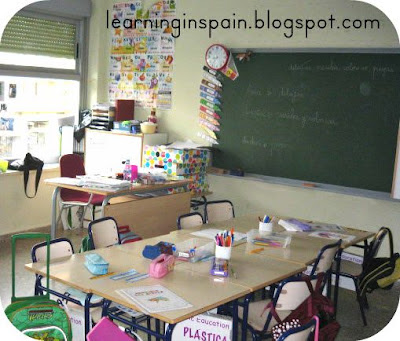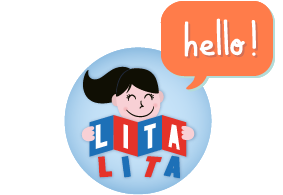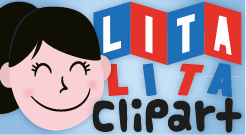I have introduced myself as a dual language teacher. But in fact, I’m a trial language teacher.
This is how it works.
I teach in Spain, where everybody speaks Spanish. Spain is divided into different regions. Some of this regions have their own regional language: Gallego, Euskera, Catalan, Valenciano, Mallorquin… So if you teach in one of those regions you have a dual classroom.
How do we divide language teaching time? By subjects: language arts in both languages, maths in the kids mother tongue (in many regions their mother tongue is not Spanish, parents choose that option), Science and Socials studies are taught in the regional language
Specialities are taught by other teachers: P.E., Arts, Music and Religion. Parents choose the language they want kids to study them.
And here comes the English language. We have ESL, BUT it worked so poorly that when kids arrive to High School they can’t understand a simple conversation, so politicians decided some years ago that our classroom wouldn’t be bilingual any more, they will become TRILINGUAL.
I know. It sounds crazy!

So this is how my classroom works:
Valenciano language arts
Valenciano maths
Valenciano Science and Social Studies
Valenciano PE
Valenciano Music
Spanish language arts
English ESL
English Art
I currently teach valenciano and Spanish language arts, math, Science and Social Studies. I used to teach Art too, it depends on the year.
I hope I explained it clear enough and you can see more or less how we teach in our TRIlingual school.
I will be linking up with I teach dual language who is hosting a very interesting linky party.








That's very interesting and good to know. Thanks for taking the time to explain this…I just assumed you were teaching Spanish and English in a dual language program.
Connie:)
http://www.welcometofirstgraderoom5.blogspot.com
Thanks so much for participating in our linky party! I studied and traveled in Spain for two months back in the summer of 2008. I did not make it to Spain but I did learn a lot about the strength of the regional languages when visiting Galicia, Pais Vasco, and working at a camp in the Pyrenees Mountains. I so wish I could have visited some schools! Thanks for giving us a window into your classroom!
This is so interesting to me, particularly that the parents can pick and choose, so that it appears to be like a custom program for each child. Now do all of the students in your class then have art in English, or have some elected to do it in another language/dialect?
I also appreciate that your politicians saw that something was not working and worked to change it for the better. I know that as most schools here do not begin teaching a second language until middle or high school to our native English speaking students, most students miss out on the opportunity to learn a language alongside when they are learning their native language of English. I think, similar to what you are saying, these programs are then less effective. I know I left high school barely being able to hold a conversation after four years of high school Spanish. It wasn't until I went to Spain and was immersed in it- similar to how our students are immersed in the language in our classrooms- that I really feel that I picked it up! Thanks for sharing 🙂
Thank you for your thoughtful comments. I'm heading to read everyone's post about their dual classrooms.
I love that! I would love to be trilingual 🙂 Thanks for you sweet comments!
☼Libby
Dual Kinder Teacher
How cool!! My hubby is from Spain (Madrid) and we often discuss Spain's educational system versus the one I work/teach in here in the US. We visit often and are amazed at our friends' kids ability to speak English. Yes, it's not fluent, but my girls are able to communicate in English with their little friends! So cool!